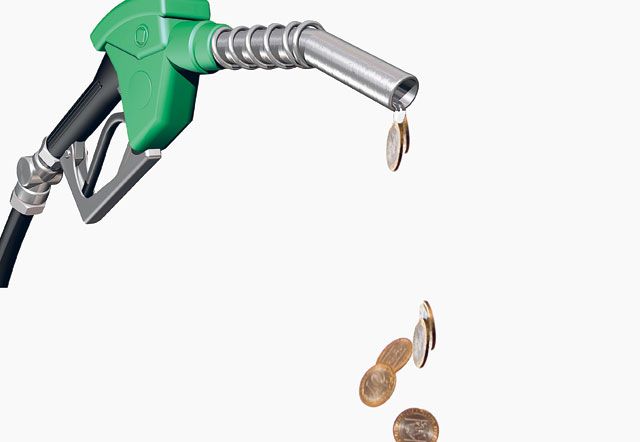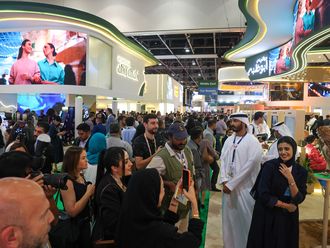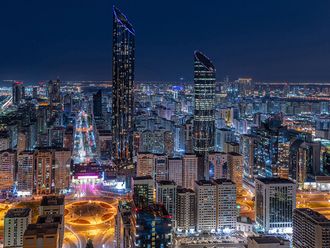After collective losses estimated at hundreds of billions of dollars, Arab countries are believed to have crossed the peak of the nearly 15-month-old international financial crisis.
Now, the worst part is over and things appear to be on the mend.
Recovering economic conditions, a fresh appetite for new investments, more spending on infrastructure projects and increasing trade are expected to prevail in the next two years, economists say.
The "positive" scenario is supported by the currently stable and relatively high hydrocarbon prices in the oil-rich Gulf region and affluent Sovereign Wealth Funds — nearly 29 per cent of SWFs originate from the Middle East. Forty-three per cent of these originate from Asia, and 18 per cent from the rest of the world.
"I think 2010 and 2011 will be the years of recovery with positive surprises," Marios Maratheftis, Regional Head of Research for Middle East, North Africa and Pakistan at Standard Chartered Bank in Dubai, said.
The Middle East and North Africa region in 2008 lost $200 billion (Dh734 billion) of the $3.2 trillion worth of wealth acquired in 2007, the largest loss of wealth by percentage in the world, according to a recently released report by a global management consulting firm of Boston Consulting.
"I expect that the direct impact of the crisis is over and done with," said Ahmad Gweili, chairman of the Arab Economic Unity Council, one of the specialised organisations of the 22-member Cairo-based Arab league.
|According to Mr. Gweili's calculations, Arab loses from the crisis, both direct and indirect, are estimated at US$ 2.5 trillion. The figure includes loses from last year's falling oil prices, losses in foreign investments as well as a slow down in trade, among others.
"What we are seeing now is the indirect consequences," Gweili told Gulf News in an interview, explaining that the sectors still negatively influenced by the economic downturn include exports, tourism and transit revenues.
Among the most hit sectors during the international crisis were stocks, property and the financial sector, which is a popular target for Sovereign Wealth Funds' investments.
SWF investments in the financial sector fell about 45 per cent at the peak of the economic crisis, economic reports noticed.
Overall, the losses of four SWFs in the Gulf region during 2008 were estimated at $350 billion, according to a report prepared by the United Nations Conference on Trade and Development (UNCTAD) released last July.
The four funds were the Abu Dhabi Investment Authority (ADIA), Kuwait Investment Authority (KIA), Qatar Investment Authority (QIA) and the Saudi Arabian Monetary Agency (SAMA).
Drop in assets
The assets of the four main Gulf funds dropped to $1.115 trillion last year from $1.165 trillion at the end of 2007. However, the government pumped $300 billion of oil money into the funds to help narrow their losses. The Gulf region includes many of the biggest oil producers in the world: Saudi Arabia, UAE and Kuwait. Qatar, an oil producer, which is also a giant gas producer.
While some economists believe the Arab Gulf countries were most hit by the crisis because they are more open and linked with global institutions, other economists gave a different perspective.
The fact that many Arab Gulf countries are among the world's top oil-producing countries, Maratheftis explained, provided a cushion that absorbed a chunk of the losses.
"Gulf economies are very open and hence are vulnerable to developments in the world economy," Maratheftis told Gulf News. Yet, "the Gulf benefited from vast budget and trade surpluses during the good years which have enabled governments to increase spending and pick up the slack in their economies.
"Furthermore, high oil prices this year meant that Gulf governments also avoided budget deficits this year. So, on the contrary, I think Gulf countries are better positioned," he said.
Currently, oil prices are in the range of $70 to $80 per barrel, almost half of the high prices reached in the first half of 2008 when they touched $147 per barrel. But in the second half of last year prices crashed below $40 per barrel.
However, economic recovery will start emerging in figures in the first quarter of next year.
Challenges
The UAE is expected to record a growth between 1.5 and 4 per cent in 2010. Saudi Arabia is poised to grow by four per cent in 2010 while it is projected to register real GDP contraction of 0.9 per cent in 2009.
Following a negative growth this year, the Kuwaiti economy is anticipated to record a growth of around three per cent next year. Despite the present challenging environment, "generations of wealth and surpluses are produced by the relatively high oil prices" for the region's countries, Maratheftis said.
Furthermore, despite the drop in their fortunes during the current financial crisis, "in 10 years, total assets under SWF management [worldwide] are likely to amount to $7 trillion, more than twice the volume of today ($3 trillion)," a recent Deutsche Bank report noted.
Regional SWFs are coming out of the crisis with a "renewed appetite to strike deals", but with a different strategy, the Financial Times (FT) reported recently, in reference to their selectivity about analysing opportunities.
"Past experiences do not seem to have deterred new investments, but much more focus is being put on the strategic rationale, the terms and conditions and the absolute level of pricing," Eric Meyer, a senior banker at Societe Generale, the French banking group, was quoted as saying by the FT.
Property investments in both well-established and emerging markets are likely to have a big share of SWF investments, as well as focusing on trade relationships. Also, the financial services sector is expected to remain a popular target for SWFs in the future.
According to a report by Deutsche Bank issued recently, the total cross investments by SWFs and state-sponsored investors since 1995 in the global banking industry amount to $113 billion.
At the same time, investments in the financial industry at large amount to $137 billion, which includes non-bank financial institutions.
Industries, health care, aerospace and real estate are among the top future targets for SWFs.
Apart from being more attracted towards minority investments in public companies, SWFs are increasingly demanding seats on the boards of companies in which they have invested. The FT cited the example of collaborative investment between the Kuwait Investment Authority, the Government of Singapore Investment Corporations and the China Investment Corporation in a $2.8 billion equity deal to help finance BlackRocks' acquisition of Barclays Global Investors' asset management business.
Key factor
On the other hand, high oil prices were the main factor leading to the increase in inter-Arab trade transactions, according to Gweili. "In 2004, inter-Arab trade reached $40 billion," Gweili said. "However, for the first time, the size of inter-trade has crossed at present the level of $100 billion."
While inter-Arab trade could compensate Arab losses from the crisis, he explained, Arab tourism in Arab countries and inter-Arab investments can also enhance the Arab state's ability to absorb the negative impact of the international financial crisis.
Meanwhile, Arab countries have a "positive" scenario and a "worst" one, Maratheftis said. When asked about his perspective, he explained, "My worst case scenario is related to the implications of the housing market correction and the speculation we saw earlier in 2009." This, he added, "could lead to rising defaults and tight credit conditions continuing into 2010.
"Usually defaults lag the business cycle, so it is quite possible that we have not seen the full unwinding of defaults and the credit cycle. If this is combined with weak global growth then the implications on Gulf economies will be negative. But this is not my main case scenario," he said.
"I expect strong growth in 2010 in the GCC driven by higher hydrocarbons and strong government expenditure in infrastructure projects and key sectors of the economy. I do not have a best case scenario, but my main case scenario is a positive one," Maratheftis said.













